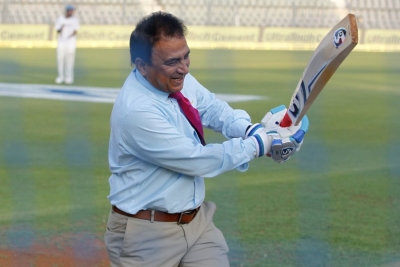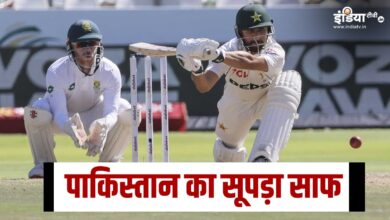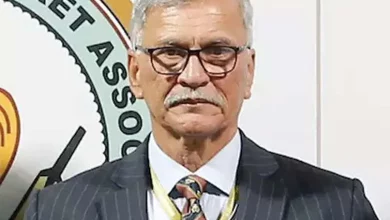Bonhomie Behind Rivalry: When Imran Asked Sunny To Defer Retirement

New Delhi, Oct 22: In cricket, rivalries between the players from different nations usually lead to friendships and in some case, fiery faceoffs, which remain etched in the memory of cricket fans.
In the lead-up to the India-Pakistan marquee clash in the ICC T20 World Cup at Melbourne on Sunday, we look at the battle between India batting great Sunil Gavaskar and Pakistan’s inspirational all-rounder Imran Khan, which upped the excitement factor among the cricket fans.
Gavaskar dominated the batting in world cricket during the 1970s since his debut in the West Indies at the start of the decade. Imran, meanwhile, dominated bowling but was also a superb all-rounder for Pakistan after struggling in the initial stages in the international circuit.
Gavaskar first faced Imran in competitive cricket when India toured Pakistan in 1978-79 and finished the series with 447 runs at an average of 89.40, though the hosts’ won 2-0.
In the years to come, Gavaskar and Imran faced each other on many occasions, with the right-handed opener withstanding the challenge from the fiery seamer with pure class and patience.
Gavaskar also led India to their second Test series victory over Pakistan, the first came in 1952-53, in 1979-80, both at home.
Apart from Tests, Gavaskar also did pretty well against Imran in ODI cricket.
In Tests, Gavaskar scored 2,089 runs, averaging 56.45, besides making 600 ODI runs at an average of 33.33 against Pakistan.
Gavaskar had written at length in his 2018 column in a leading national daily as to how Imran had successfully convinced him to postpone his retirement till Pakistan came to tour India in 1987.
“‘You can’t retire now. Pakistan is coming to India next year and I want to beat India in India. If you aren’t part of that team, it won’t be the same. Come on, let’s have one last tilt against each other’, Imran replied when I told him I planned to retire at the end of India’s tour of England,” Gavaskar wrote.
“It was in 1986 and we were having lunch at an Italian restaurant in London. I said if the announcement of the tour wasn’t made before the final Test, I would go ahead and announce my retirement from international cricket. The tour was indeed announced in a few days.
“Pakistan won the last and final Test of that series after the earlier Tests were all drawn and thus beat India for the first time in India. I didn’t announce my retirement at the end of the Pakistan series as I was keen on playing the MCC bicentenary Test at Lord’s a little later.
“When that side was announced, there was Kapil Dev, Dilip Vengsarkar, Imran and Javed Miandad. Imran and I had a partnership of 182 runs and what I enjoyed was the chats we had at the end of each over when two batsmen usually come down the pitch to encourage each other.
“That’s exactly how it was at first as we tried to assess the bowlers and the situation, but as the partnership grew, Imran and I were telling each other stories from the Pakistani and Indian dressing rooms and having a laugh over it.
“Then when he smashed a six in the MCC President’s box, I joked that this was not expected when they selected him for the game. He turned around and asked where the media box was and I said it’s too far even for you to hit there,” Gavaskar wrote.
Imran, though he found it difficult to dismiss Gavaskar, was otherwise successful against India — taking a total of 131 wickets across Tests and ODIs against the arch-rivals. But it was the mutual respect and friendship between Gavaskar and Imran which has stayed the course of time.
Gavaskar further explained in the article how Imran developed from a raw pacer to being the one with deadly control and accuracy, an illustration of which was seen in the 1982-83 series against India.
“We have known each other since 1971 when he was trying to qualify for Worcestershire County team. He was then just a scrawny kid, a medium pacer with an open chested action bowling inswingers but with little or no control.
“By the time we played him in a Test match seven years down the road, he had filled up and was now genuinely quick. The inswingers were still his stock deliveries but he had also developed the one that went straight through and got batsmen out caught behind as they played inside the line anticipating the inswinger.
“He destroyed India almost single-handedly in 1982-83 taking 40 wickets and in the process ended the career of India’s best batsman of the decade, GR Viswanath. ‘Vishy’ shouldered arms to a ball way outside the off-stump and it swung so much that it almost knocked the leg-stump out,” Gavaskar wrote.






